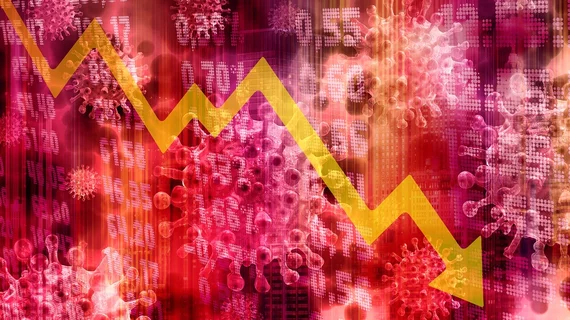Breast cancer screening numbers aren’t bouncing back to pre-COVID levels for some imaging providers
A “substantial” deficit of missed mammography appointments is likely deepening breast cancer disparities during the pandemic, according to new research published Friday in JAMA Network Open.
Numerous studies have tracked COVID-19’s harmful impact on the specialty, with screening numbers dropping precipitously during shutdowns last year. Many have since seen patient volumes rebound, however, that isn’t the case for safety-net providers in the Bay Area.
The University of California, San Francisco, has seen its mammography numbers continue to lag and is concerned about worsening outcomes among minority populations.
“In contrast to reports showing recovery of screening volumes, our data highlight persistent low [breast cancer] screening volumes and an absolute decrease in the proportion of completed mammograms among Latinx and Black women,” Ana Velazquez, MD, a thoracic oncology fellow at UCSF, and colleagues wrote Aug. 6. “We hypothesize that these differences by race/ethnicity are multilevel and reflect the effect of worry, competing priorities, limited access, and disproportionate burden and socioeconomic impact of COVID-19 in Latinx and Black communities.”
For their research letter, Velasquez et al. evaluated screening mammography trends at UCSF’s urban safety-net hospital using electronic health record data. In the baseline year of 2019, the hospital recorded 5,662 screening mammograms at an average of 472 per month. That dropped to 3,385 in 2020, which is about 60% of 2019 levels. During the first stay-at-home order in early 2020, screenings dropped to 194 in March (41% of baseline) and zero in April. Missed appointments, meanwhile, leapt to 40% in March 2020, compared to a typical pre-pandemic clip of 21%.
Screening mammograms increased during the reopening phase between June and November 2020, Velasquez and co-authors noted. But monthly tallies still remained below the 2019 baseline, except for Breast Cancer Awareness Month, with 496 exams recorded in October. Screenings declined again during the second shutdown, while mobile mammography plummeted from 831 exams down to 248 in 2020. UCSF recorded zero such appointments between April and June of last year.
The safety-net hospital completed roughly 61% of scheduled screening mammograms in January 2021, versus a monthly average of 79% during the baseline period. Compared to pre-COVID numbers, the volume and proportion of mammograms completed decreased across all racial and ethnic groups during the second stay-at-home order. And the proportion of completed exams was lowest among Black women at all time points, younger women during the first shutdown, and patients age 70 or older during the second stoppage.
“Although vaccination efforts are a top priority, healthcare systems should leverage COVID-19-related community outreach and engagement to develop concerted efforts that promote preventive care and ensure preexisting disparities do not worsen among communities with higher risk,” Velasquez and colleagues advised, cautioning that their results are limited by their single-center nature.

